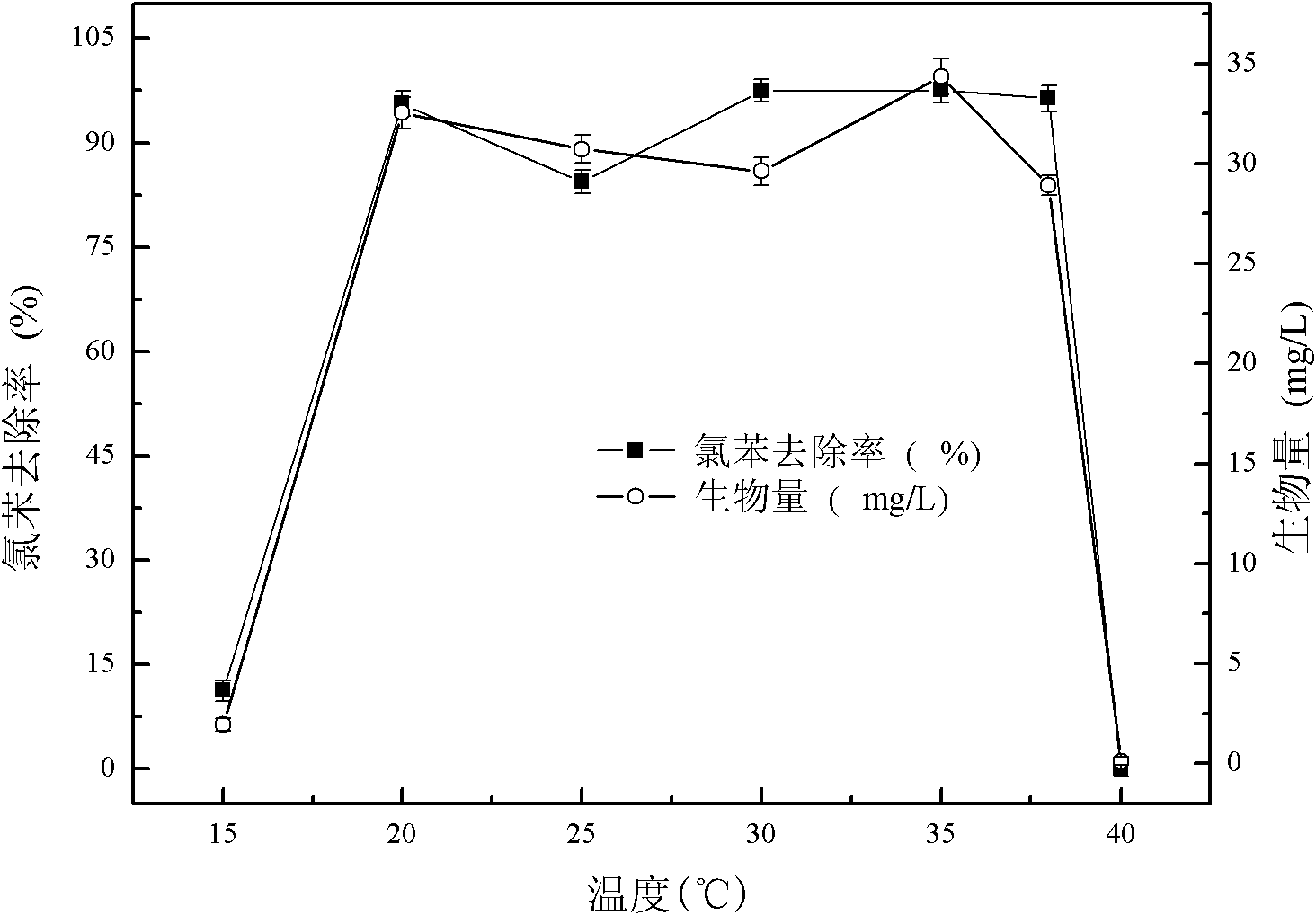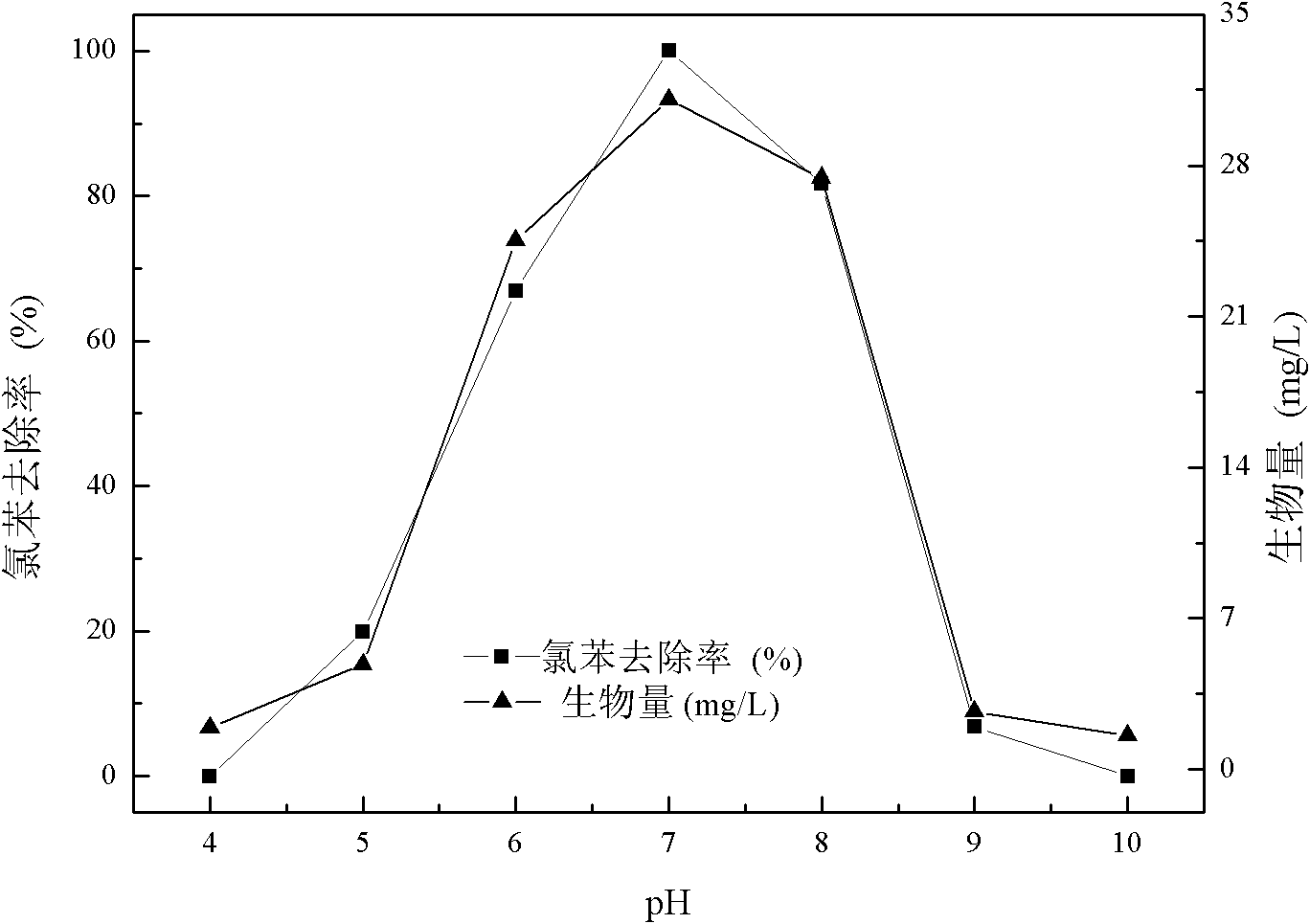Ralstoniapickettii H2 with chlorobenzene degrability and applications thereof
A technology of Ralstonian bacteria and degrading bacteria, applied in the direction of bacteria, microorganism-based methods, microorganisms, etc., to achieve high-efficiency degradation ability, rapid degradation, and good application prospects
- Summary
- Abstract
- Description
- Claims
- Application Information
AI Technical Summary
Problems solved by technology
Method used
Image
Examples
Embodiment 1
[0046] Example 1: Isolation, purification and identification of Ralstonia pickettii strainH2
[0047] 1. Separation and purification of Ralstonia pickettii strainH2
[0048] Ralstoniapickettii strainH2 is a gram-negative bacterium obtained by collecting the biofilm on the surface of a biotrickling filter bed filler for purifying chlorobenzene waste gas, and separating and purifying it. Specific steps are as follows:
[0049] Take two fillers from the biotrickling filter bed, wash the biofilm in a shaker flask with 30mL sterile water, place on a shaker at 160rpm, and shake at 30°C for 1 hour. Then use the chlorobenzene-degrading bacteria screening medium for strain screening. Chlorobenzene-degrading bacteria screening medium composition: KH 2 PO 4 , 0.5g; Na 2 HPO 4 .12H 2 O, 0.5g; (NH 4 ) 2 SO 4 , 2g; MgSO 4 ·6H 2 O, 0.1g; CaCl 2 , 0.01g; MnSO 4 ·H 2 O, 0.13 mg; ZnCl 2 , 0.23mg; CuSO 4 ·H 2 O, 0.03 mg; CoCl 2 ·6H 2 O, 0.42 mg; Na 2 MoO 4 2H 2 O, 0.15 mg;...
Embodiment 2
[0058] Example 2: Detection of Ralstonia pickettii H2 biodegradability of p-chlorobenzene
[0059] 1. Biodegradation characteristics of p-chlorobenzene by bacteria Ralstonia pickettii H2 at different temperatures
[0060] The degradation experiment of Ralstonia pickettii H2 p-chlorobenzene was carried out at different temperatures, and it was found that it has a high ability to degrade benzene compounds at 25-38°C. From the perspective of practical application, 30°C is the best temperature, and the removal rate at this time The highest, the specific implementation steps are as follows:
[0061] Take 150mL inorganic salt culture medium (KH 2 PO 4 , 0.5g; Na 2 HPO 4 .12H 2 O, 0.5g; (NH 4 ) 2 SO 4 , 2g; MgSO 4 ·7H 2 O, 0.1g; CaCl 2 , 0.01g, MnSO 4 ·H 2 O, 0.13 mg; ZnCl 2 , 0.23mg; CuSO 4 ·H 2 O, 0.03 mg; CoCl 2 ·6H 2 O, 0.42 mg; Na 2 MoO 4 2H 2 O, 0.15 mg; AlCl 3 ·6H 2 O, 0.05mg; distilled water to make up to 1000mL) was divided into 14 500mL anaerobic bott...
Embodiment 3
[0076] Embodiment 3: Ralstonia pickettii H2 detects the biodegradability of benzene, dichlorobenzene, phenol, chlorophenol
[0077] Take 150mL inorganic salt culture medium and divide into eight 500mL anaerobic bottles, and sterilize. Divide into 2 groups, 4 bottles in each group, add freshly cultivated H2 bacterial suspension to each bottle in one group, OD 600 0.15, the inoculum size was 2mL / 150mL, and the only carbon source was benzene / dichlorobenzene / phenol / chlorophenol with an initial concentration of 50mg / L. They were cultured in a shaker at 30°C at 160 rpm; the other 4 bottles of the same uninoculated culture medium were cultured at the corresponding temperature at the same time as a blank control. After cultivating for 36 hours, samples were taken to detect the concentration of benzene / dichlorobenzene by gas chromatography, and the concentration of phenol / chlorophenol by liquid chromatography. The results were as follows: Figure 8 It was shown that the removal rates...
PUM
| Property | Measurement | Unit |
|---|---|---|
| Tolerance concentration | aaaaa | aaaaa |
Abstract
Description
Claims
Application Information
 Login to View More
Login to View More - R&D
- Intellectual Property
- Life Sciences
- Materials
- Tech Scout
- Unparalleled Data Quality
- Higher Quality Content
- 60% Fewer Hallucinations
Browse by: Latest US Patents, China's latest patents, Technical Efficacy Thesaurus, Application Domain, Technology Topic, Popular Technical Reports.
© 2025 PatSnap. All rights reserved.Legal|Privacy policy|Modern Slavery Act Transparency Statement|Sitemap|About US| Contact US: help@patsnap.com



